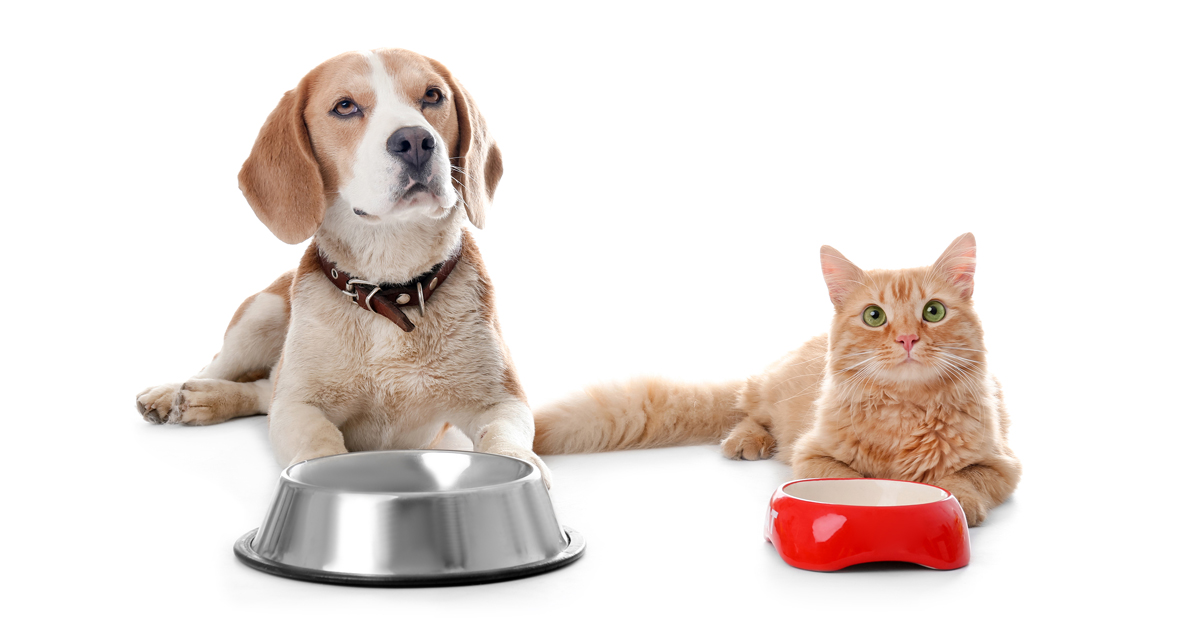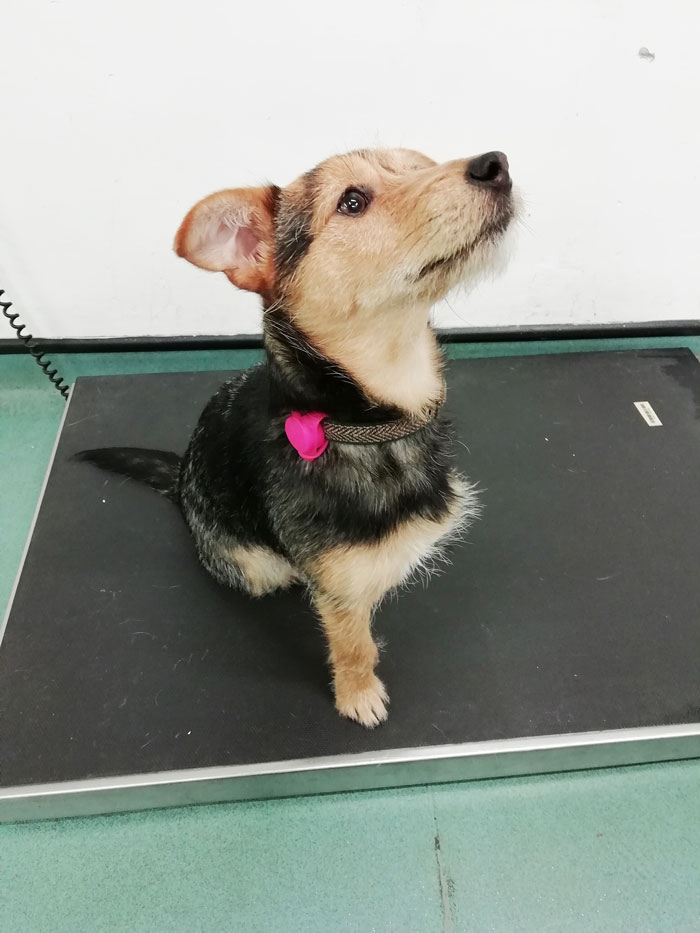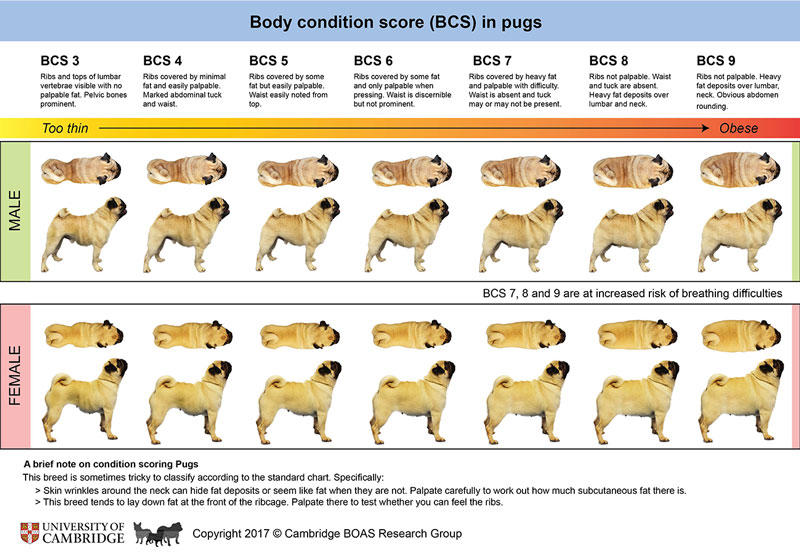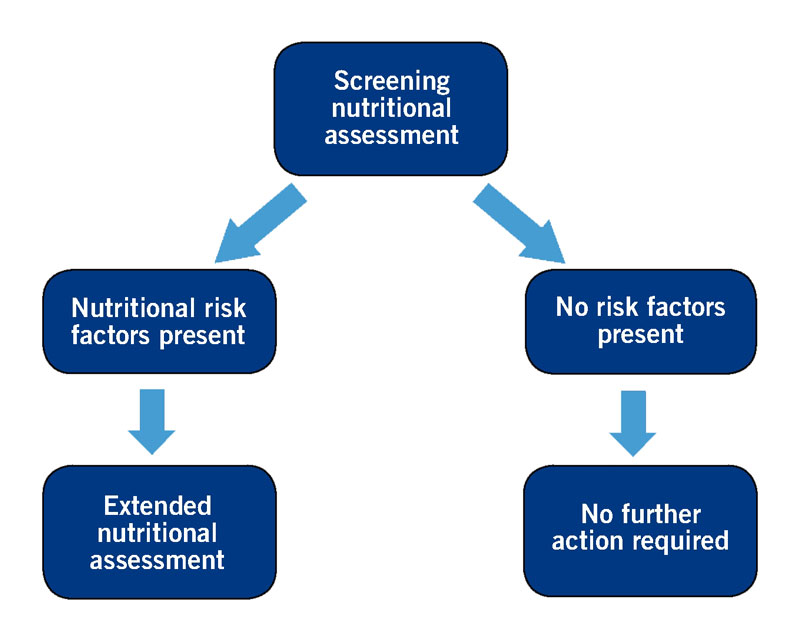
All animals seen in a consultation – whether by an RVN or a vet – should undergo a nutritional assessment as part of the five vital signs (Freeman et al, 2011).
The WSAVA has developed a global initiative to standardise five vital signs as part of the standard physical examination for all small animals. These are:
- temperature
- pulse
- respiration
- pain assessment
- nutritional assessment
A nutritional assessment should include weighing of the animal and a body condition score (BCS). Clients need to be made aware whether their pet is overweight, underweight or at an ideal bodyweight. Many clients are not aware of pet weight and it is important the subject is discussed with them.
People’s perception of what an ideal bodyweight and shape are has been skewed greatly. Studies have shown pet owners are not able to correctly determine whether their pet is at its ideal bodyweight (Eastland-Jones et al, 2014; Courcier et al, 2011).
A fear exists that just starting the discussion of nutrition can open a whole can of worms regarding which diet is best, but ways exist to give recommendations that are in the best interest to the animal and its owner.
A total of 90% of pet owners have reported they want a nutritional recommendation from their vet; but, when being seen in practice, only 15% of clients actually perceived receiving one (Pet Nutrition Alliance, 2011). Don’t be afraid to talk about nutrition.
Weighing the animal (on appropriately sized scales) is the initial start for the nutritional assessment (Figure 1). Every animal should be weighed every time it is presented to the practice. Hospitalised animals should be weighed at least twice a day.

Pet owners should be actively encouraged to weigh their pets at home. While weighing the animal, you can start to palpate and make an assessment for the BCS (Figure 2). Once you have got into the habit of weighing every pet every time and palpating for the BCS, it really doesn’t take any extra time – remember to record your findings.

If you are happy, the owner is happy, the pet is at its ideal BCS and no risks are present (for example, neutering is occurring next week), the nutritional assessment is complete (Figure 3).

If risk factors are present, an extended nutritional assessment can be performed. This doesn’t have to be at the same time – it can be scheduled at a different time, with owners being asked to go away and start a food diary or answer a food questionnaire.
When broaching the nutrition question, it is important to think about how we conduct our nurse clinics. Hollins (2017) described the “learning pyramid”, also referred to as the “cone of experience”.
Nothing has been proven to be correct, but a huge degree of sensibility we learn from more active means than passive exists. The following percentages are designed to be rough guidelines, but do highlight this point:
- 90% of what they learn when they teach someone else/use immediately
- 75% of what they learn when they practise what they learned
- 50% of what they learn when engaged in a group discussion
- 30% of what they learn when they see a demonstration
- 20% of what they learn from audiovisual
- 10% of what they learn when they’ve learned from reading
- 5% of what they learn when they’ve learned from lecture
Telling someone the food he or she is feeding his or her pet is appropriate, or the pet isn’t at the correct BCS, is going to sit in the 5% being lectured at category. In terms of having a discussion with an owner about nutrition, engaging with him or her will hit the 50% category (10 times as much information), while showing him or her how to conduct a BCS will hit the 75% category.
Getting the owner to go home and show family members how to conduct the BCS will reach 90% retention of the information. Think about visual aids – what handouts and diagrams can we use? It’s a digital age – websites and YouTube videos hold a vast amount of easily accessible information.
Starting a nutrition discussion
In terms of starting a nutrition discussion, why not just open by asking “are you happy with the diet you feed?” Being a closed question, it’s either going to give you a yes/no answer. The way in which the owner answers will also gain you a lot of information. How did he or she answer that question?
As you know, it’s not just what you say, but how you say it. What was his or her body language saying? Some clients get very defensive when you start discussing nutrition. This may be because they have been reprimanded in the past about what they feed. It is vital clients are educated about nutrition, and not made to feel guilty or to be bad owners.
If a client’s pet is outside the ideal BCS, this does need to be highlighted to the owner. If you have demonstrated the BCS, he or she will already know this. It might be the diet he or she is feeding is a really good-quality one – he or she is just feeding too much or too little, or too many treats, or not providing enough exercise.
Many clients won’t be able to tell you what diet they feed, whether it is a complete or life stage diet, or the feeding volumes in grams; however, some will be able to tell you down to the number of kibbles. Don’t be judgemental – communication is important; what is important to you as an RVN is not the same to that pet owner.
What is the best diet?
No real answer to what the best diet is exists, other than the best diet for each pet is the one it does the best on. Studies exist looking at individual nutrients and their benefits in set populations of animals.
Recommending a diet can be difficult, but the recommendation should be primarily aimed at ensuring the diet is balanced for the intended life stage, and that it is batch tested (for contaminants and nutrient content – this is valid for dry, tinned or raw diets). The quality of the ingredients will not necessarily be reflected by anything displayed on the packaging.
Also, no definitive minimum or maximum levels for carbohydrates exist in cat and dog foods, so we just don’t know what is the most ideal. This highlights why having that nutritional conversation with the owner and performing a nutritional assessment is so important. It needs to be performed regularly and recorded on the clinical history.
Be confident
As RVNs, we are ideally positioned to give nutritional advice and recommendations based on the clinical health of the animal. Have faith in your abilities and underpinning knowledge in the subject. Clients are wanting your advice and recommendations – be confident in what you say and it will be really reflected on how you are perceived.

Leave a Reply